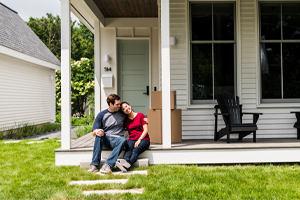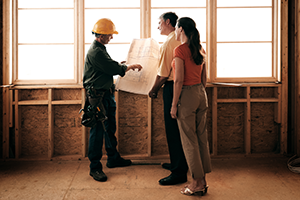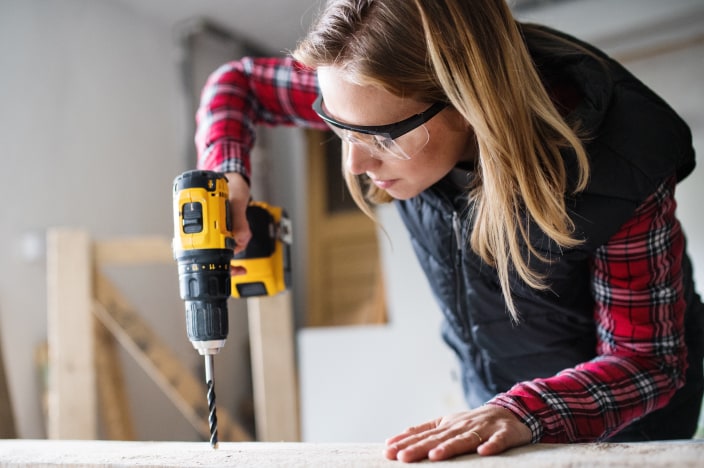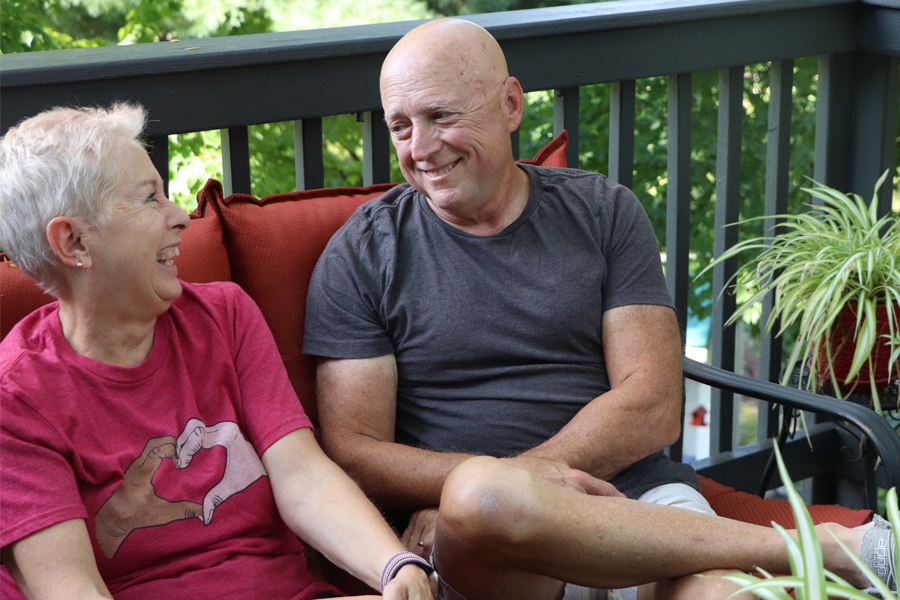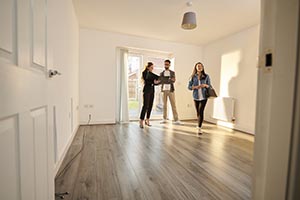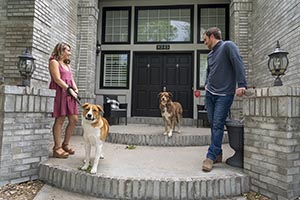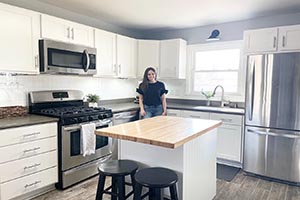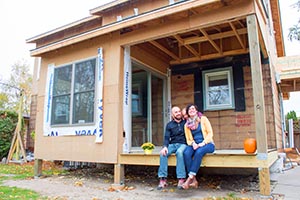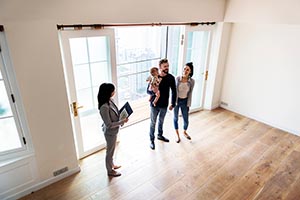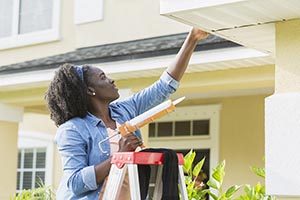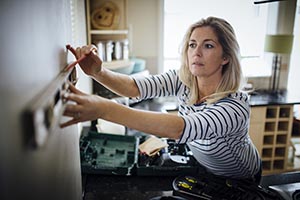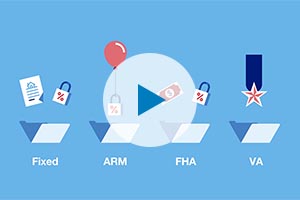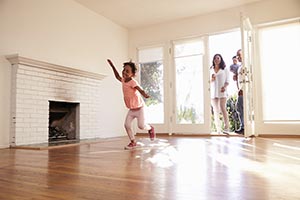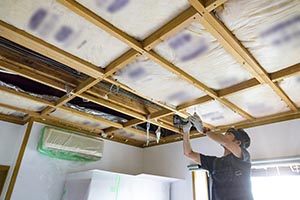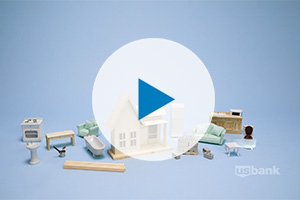Ready to create a dream home within your budget and with little experience under your belt? Learn how taking a do-it-yourself approach can help you achieve a modern and beautiful living space.
When shopping for a dream home, you have many options to consider. Turn-key properties are livable and move-in ready, which can be desirable for those with limited time and a flexible budget. But “fixer-uppers” offer the opportunity to achieve a similar end result, with advantages like fewer costs and the ability to create personalized design features that bring your dream home vision to life. Maddie Martini, a U.S. Bank marketing specialist, recently purchased her first home with an intention of making it her own. Here are some of her beginner-friendly DIY tips for sprucing up your space and navigating the planning process.
Setting yourself up for DIY home project success
If you’re in the midst of searching for a new home, you might be drawn toward updated properties that tend to be more expensive. But by looking at older homes with a creative mindset, you may be able to purchase something more affordable that has great potential.
“During my home search, all of the homes I was in love with were $10,000 over my budget,” says Maddie. “I realized there were things I could do to make a home what I want it to be.” When she ultimately purchased a home that fit her budget, she already had an idea of the look and improvements she wanted to create with DIY methods. “There was definitely a vision because I had put an offer on another house and didn't get it. In hindsight, it was out of my price range and I could get what I wanted by just putting in a little work in my house.”
Before upgrading her home, Maddie had minimal experience with remodeling. “I’ve always been pretty creative, but I hadn’t done any projects – besides putting together a dresser,” she explains. The first project she chose was refreshing outdated walls and trim – it was a cosmetic fix that cost around $300 for supplies and paint, when it would have been substantially more to hire a professional.
Starting small with an easy project that falls within your comfort zone can be key when beginning home improvement projects. Over time, you’ll build expertise and eventually feel prepared for more advanced updates.
See before and after pictures of Maddie's bathroom:
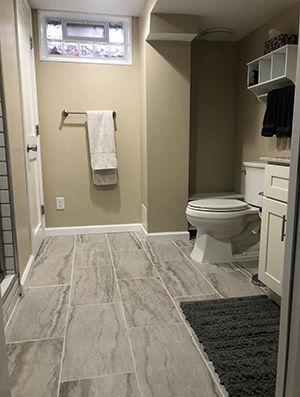

Getting the most bang for your buck
While you may want to renovate your whole house, certain spaces tend to hold more resale value than others. If you’re looking at your projects as a long-term investment, prioritize the kitchen, bathrooms and elements that play up curb appeal. Roof preservation, deck installation and cabinet refacing also go a long way in adding value.
Keeping close attention on any areas that require maintenance will preserve the utility of your home as well. Taking care of minor problems and moving forward with any necessary large-scale upgrades or replacements will ensure your home doesn’t lose value or deteriorate in structure over time.
Finding inspiration and learning techniques
Once you’ve decided on a room or area of interest to remodel, you’ll want to look at examples and explore methods to follow. Architecture and design magazines, furniture stores and even friends’ homes can offer inspiration for different concepts to try. You can also find creative ideas online.
Maddie typically starts a project by browsing the internet and social media platforms like Instagram and Pinterest to explore visual possibilities and see how other people are doing similar projects to the ones she’s planning. She also recommends looking at realty websites for bigger picture interior design inspiration. “[These sites] spark my ideas and help me get a feel for what techniques and materials are used,” she says. “Then if I need to get details on nitty gritty processes, I go to YouTube for step-by-step instructions.”
Choosing materials
The final step of the improvement process is selecting materials. These typically include items like paint, lumber and power tools. Maddie emphasizes the importance of doing research to fully understand your options and determine when to invest in higher quality supplies and when that’s not necessary.
Learning about the different varieties of materials available will help you know where to splurge on specific projects and build your knowledge for future ones. “Now I understand costs of wood based on the different types, and that was a learning curve for me,” she says. “I think the same thing with paint – for instance, I think it's important for trim to have high quality paint.”
While the specific materials used change based on each project, power tools are an investment that can be used over and over again. Precise tools can be expensive, so coming up with way to borrow, rent or make a long-term purchase plan is an important step as well. “You're not going to have everything you need right away, but investing in the tools you'll use the most is also pretty important,” adds Maddie.
Keeping a positive mindset
Throughout her home remodeling experience, Maddie has found that confidence is essential to successfully completing new projects. “There are fun parts of every project, but I’ve never had a project go completely perfect, so there are disappointing moments in every project too.” she says. “I’ve appreciated building in time and positive energy into projects to account for these disappointments, but the more I’ve learned, the more I think I could take on a full “fixer-upper.”
By approaching each task with a positive mindset, careful planning and the right materials, you’ll discover how much you’re capable of and add value to your home over time.
To continue following Maddie’s home projects, connect with her on Instagram (maddiy.martini) and Pinterest (maddiymartini)
Learn more about smaller projects you can do that offer big returns on investment.













